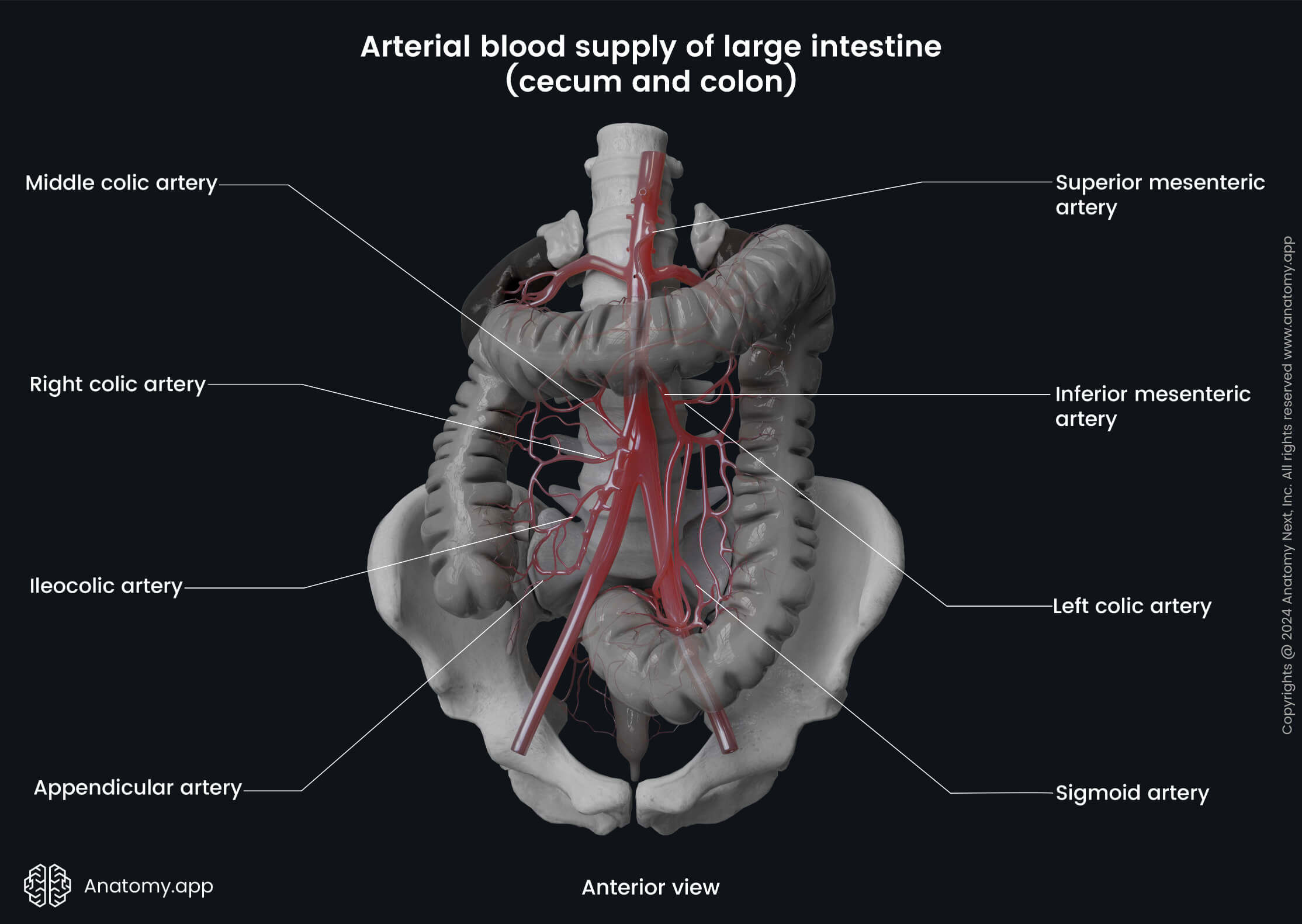- Anatomical terminology
- Skeletal system
- Joints
- Muscles
- Heart
- Blood vessels
- Blood vessels of systemic circulation
- Aorta
- Blood vessels of head and neck
- Blood vessels of upper limb
- Blood vessels of thorax
- Blood vessels of abdomen
- Blood vessels of pelvis and lower limb
- Blood vessels of systemic circulation
- Lymphatic system
- Nervous system
- Respiratory system
- Digestive system
- Urinary system
- Female reproductive system
- Male reproductive system
- Endocrine glands
- Eye
- Ear
Inferior mesenteric artery
The inferior mesenteric artery (Latin: arteria mesenterica inferior) is a visceral branch of the abdominal aorta that participates in supplying the large intestine. It supplies the distal one-third of the transverse colon, the descending colon, the sigmoid colon, and most of the rectum.
This is the smallest of the three unpaired visceral branches arising anteriorly from the abdominal aorta. It originates at the level of the body of the 3rd lumbar vertebra (L3). In the beginning, the inferior mesenteric artery descends anteriorly along the aorta and then passes to the left as it continues inferiorly. It gives several branches on its way, including:

All the mentioned branches of the inferior mesenteric artery further divide and create arcades that supply the colon at regular intervals. On its course, the inferior mesenteric artery is accompanied by the inferior mesenteric vein, which flows into the splenic vein. The inferior mesenteric vein, therefore, drains into the portal system and does not fully mirror the course of the artery.